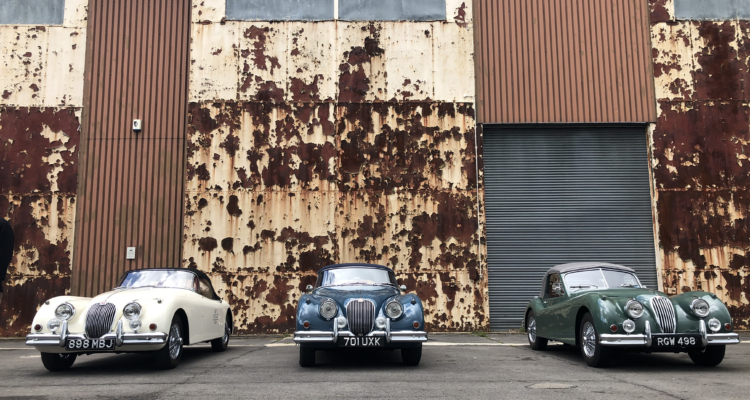MG-F – The Time is Now
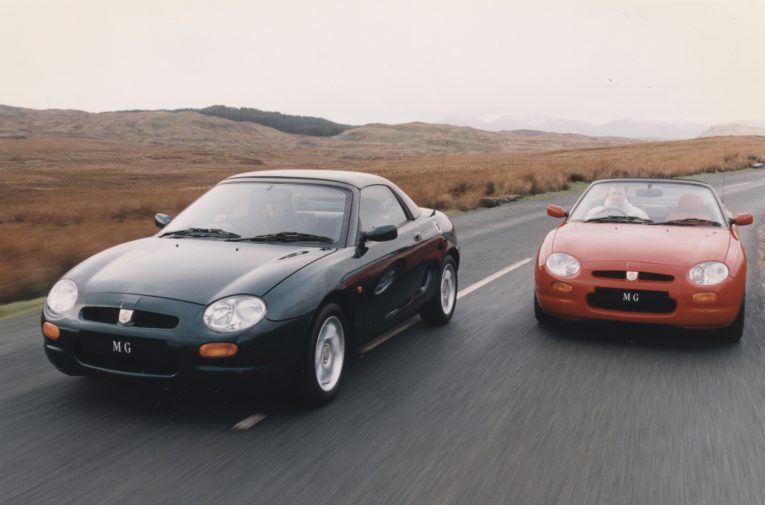
The MG-F was and still is a good car. There, we said it. The MG-F is good. We’re sure friends down the pub have regaled you with tales of head gaskets and so on, and to an extent, those stories are true. The MG-F (and pretty much anything else with a K Series engine) was prone to mixing its water and oil. But that was an engineering fault, and if you’re looking at an MG-F now, in 2020, the chances are that said fault has been addressed. As such, it’s not a thing you need to worry about.
Take the overheating out of the conversation, and you’re left with a little car with a mid-mount engine, suspension to die for and handling that can still make modern cars blush. The MG-F was a glorious high-point in terms of Rover showing the world what it could do. Bosses wanted the F to hark back to, and embody the spirit of the B. But it didn’t, because it was far, far better.
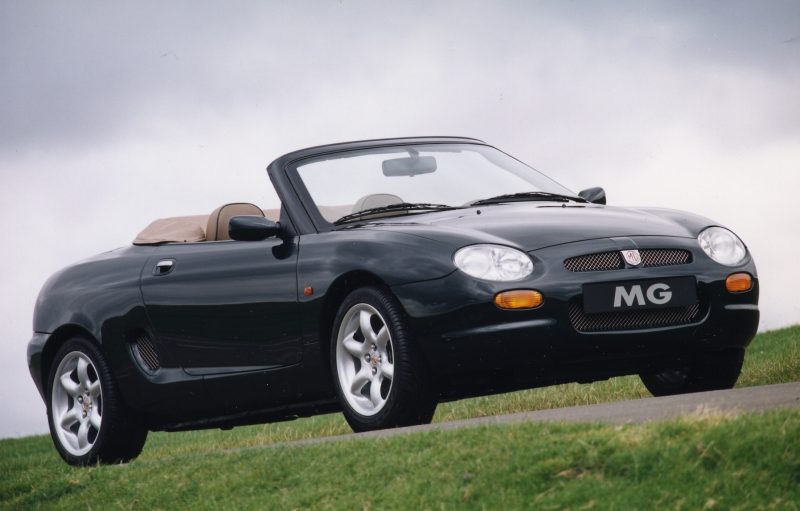
Engineers set about making a small, fun roadster and despite the fact the MG-F was constructed after a parts bin raid of other MG/Rover products, they succeeded. In fact, looking at the MG-F parts reveals nothing new or revolutionary. Some Metro here, some 200 here, so on and so forth. But what the chosen parts did when combined and arranged in the way they were, well, it made for a belter. Plus, the parts sharing means that even today, over twenty years later, keeping one running is a breeze.
An Introduction to the MG-F
The last MG sports car was in 1980, and even then that was the aging MGB GT. There had been the brief, exciting light of the MG RV8 in the early ‘90s, but that was too weird and too specialist to be considered for any sort of mass production. And this was frustrating, as the Rover Group (as it was by this point) was watching cars like the MX-5, Lotus Elan and others win favour in dealerships. Rover knew it had to react, and that reaction came in the form of the MG-F.
Development actually started in 1991, but it wasn’t fully resolved until 1995. The car was a mid-engined design and used the K Series engine that had been popularised by the Rover R8. It was a highly advanced engine for the time, and as such, had the mettle to be the heart of a sports car.
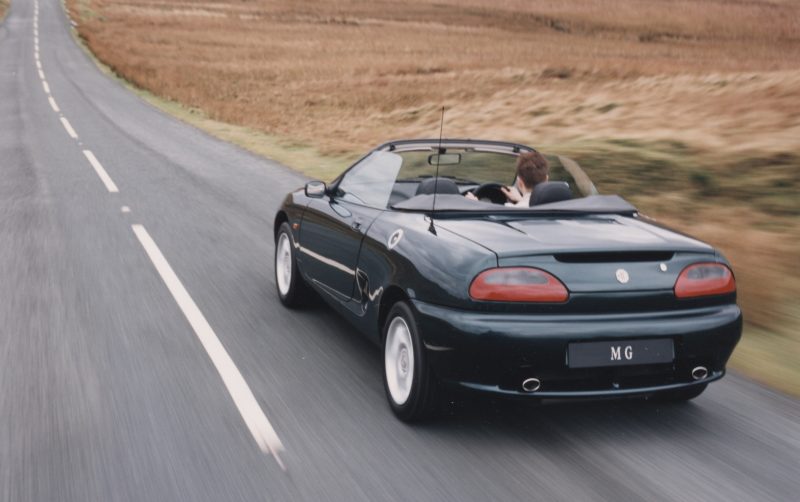
Rover didn’t go mad with the spend though. The front and rear subframes were modified Metro parts, the suspension – a clever Hydragas system – was also from the Metro. Inside, the switches and trims were all identifiable from other Rover models. However, the car didn’t look like a parts bin raid. It managed to stand alone and look, well, proper. But that would be thanks in no small part to Stephen Harper’s impressive design of the body.
Once launched, the MG-F was available with a 118bhp 1.8 16-valve engine, along with the VVC version which packed a more appealing 143bhp. The car was a riot, and the motoring press was keen to say as much. It was a sharp, connected, powerful, fun sports roadster that showed the world the British could still do it. In 1999, when Rover offered a 1.6 version and an even more powerful (160bhp) 1.8, it looked like the little roadster would be unstoppable. However, it would be very stoppable, as many owners would go on to find out.
What should I look out for?
Sadly, you can’t talk about an old Rover and not talk about the issues. And the MG-F had plenty. However, don’t be put off by this. If you’re looking at an original MG-F in 2020, and it’s running and on the road, the chances are it’s had all the work done. However, it never hurts to check the following.
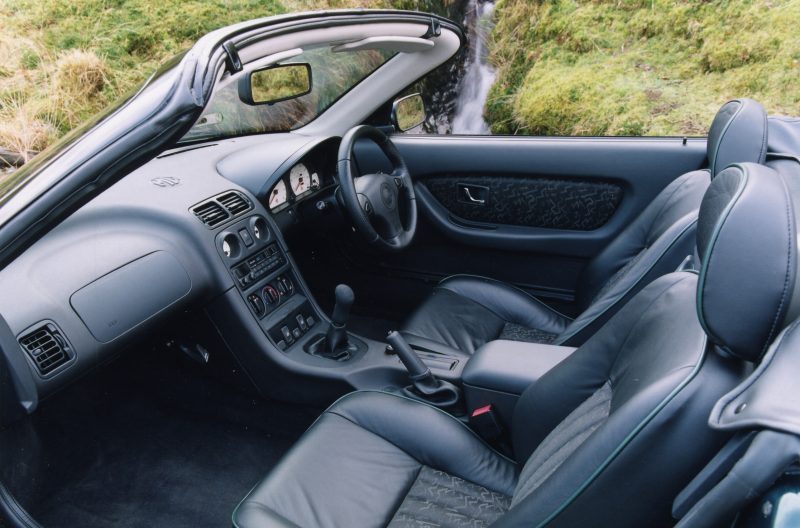
The big one is of course the head gasket. The K Series head gasket was a weak point in any car the engine was fitted to, but that weakness was amplified in the MG-F due to the engine being in the middle. The cooling system simply wasn’t up to the job and as such, the MG-F would pop a head gasket as soon as it was looked at. If you’re looking at one, you need to look through the history to see if it’s been replaced. Furthermore, don’t be surprised to see a bill for a new engine at some point, as it was common for them to be swapped completely. Check the cooling system for leaks, look in the expansion tank and oil for any sort of mixing, and check the car gets up and stays at a reasonable temperature – about 80 degrees.
What else do you need to check? There’s the suspension, as the Hydragas system can fail and leak, meaning the car will drop down low and there will be little in the way of comfort on the road. Corrosion is something to look out for, too. Particularly in the sills and the front and rear bulkheads. Floors can rot out, as can subframes and subframe mounting points. If you can get your potential purchase up on a ramp for a proper inspection, do. It’ll be worth it.
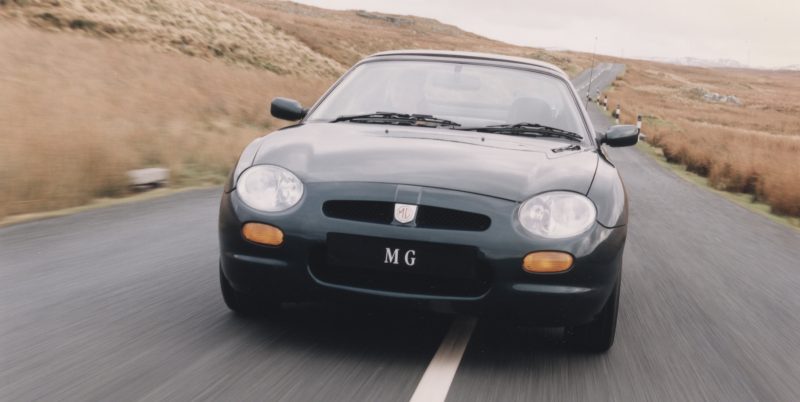
The roof was never a strong point on the MG-F. Don’t worry if it’s a bit tired though, as there are plenty of companies who can sell parts or complete roofs. That said, if you plan on using your MG-F all year round, it’s worth looking at getting a removable hard top. Not only will it make the car a proper little coupe, it’s also a good looking bit of kit.
What are prices like?
Rock bottom at the moment, but that won’t be the case for long. The MG-F is one of those cars that people are starting to take notice of, and as such, prices are slowly climbing. At the moment you can get one, MOTd and on the road, for around a grand. Really, really good examples come in at twice that.
Give it time though, and those figures will double. The MG-F is finding a following, especially as people want the early cars over the later TF version. However, due to the head gasket issues, the number of cars on the road took a hit in the early 2000s. Demand is now greater than supply, so if you want one, you need to strike now.
Why should I buy one?
Because it’s a brilliant little car, basically. Yes, it had something of a reputation for failing and for head gasket trouble, and yes that head gasket trouble was often so serious as to warrant a new engine. But so what? Those days are gone, and as we said earlier, if you’re looking at an MG-F in 2020, the chances are it’s been looked after.
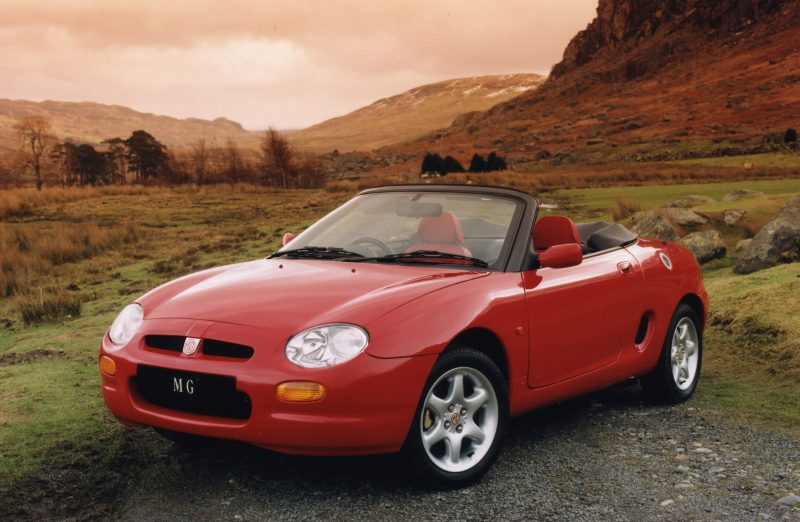
Buy an MG-F and you’ll fall in love with the way it looks, the way it drives and the way it makes you feel. It’s a fun, happy, terrier of a car. The engineers absolutely knocked it out of the park when they were penning the MG-F. It really was a return to roadster greatness.
And finally, there is the aftermarket support. Moss, Rimmer Brothers, the MG Owners Club, the list goes on. And all of these companies are swimming in parts, in upgrades and in advice that they are more than willing to pass on to any new owners. There is so much support for this car that it will never be a headache to own. And as such, there is really nothing stopping you from buying one, is there?

